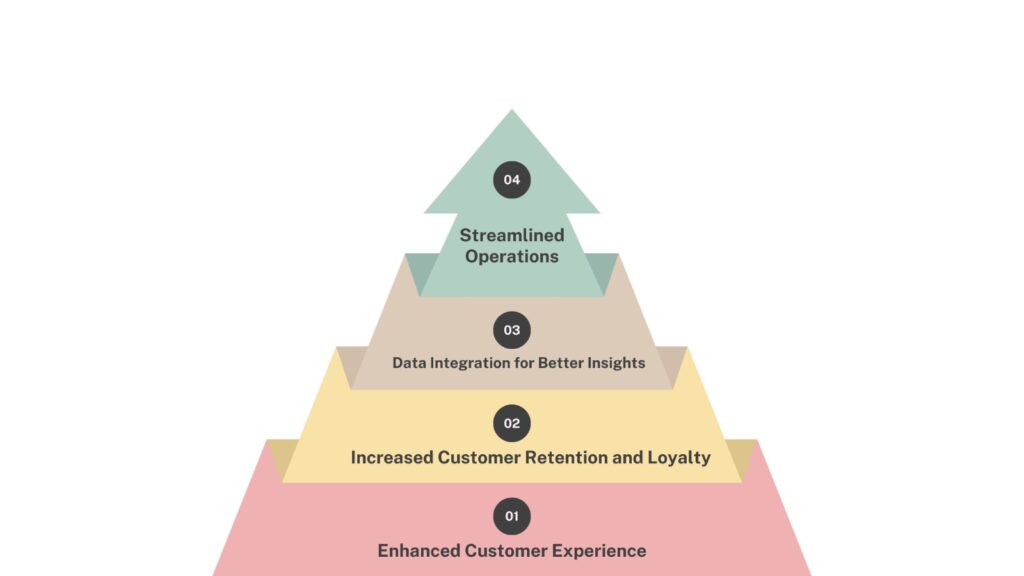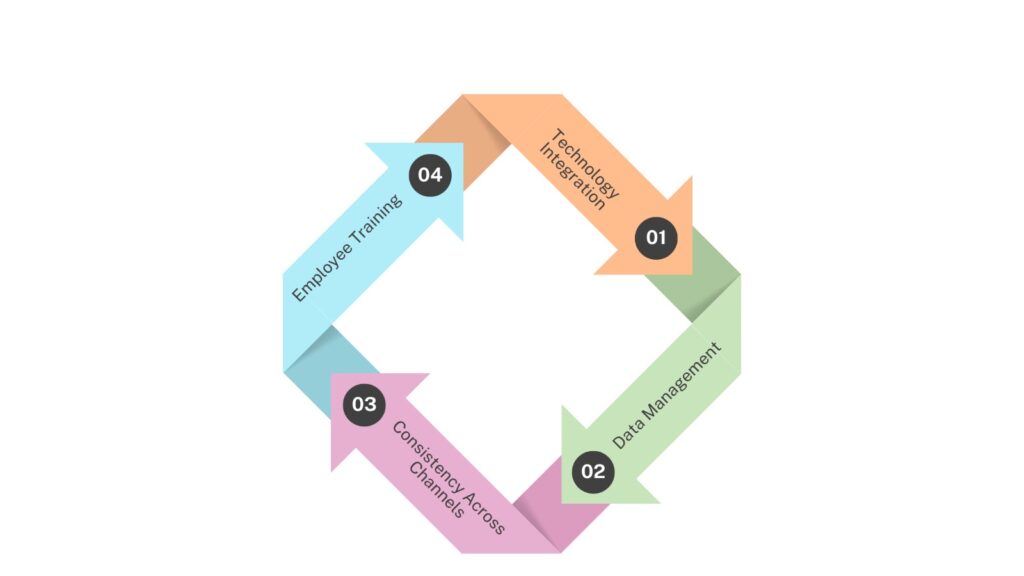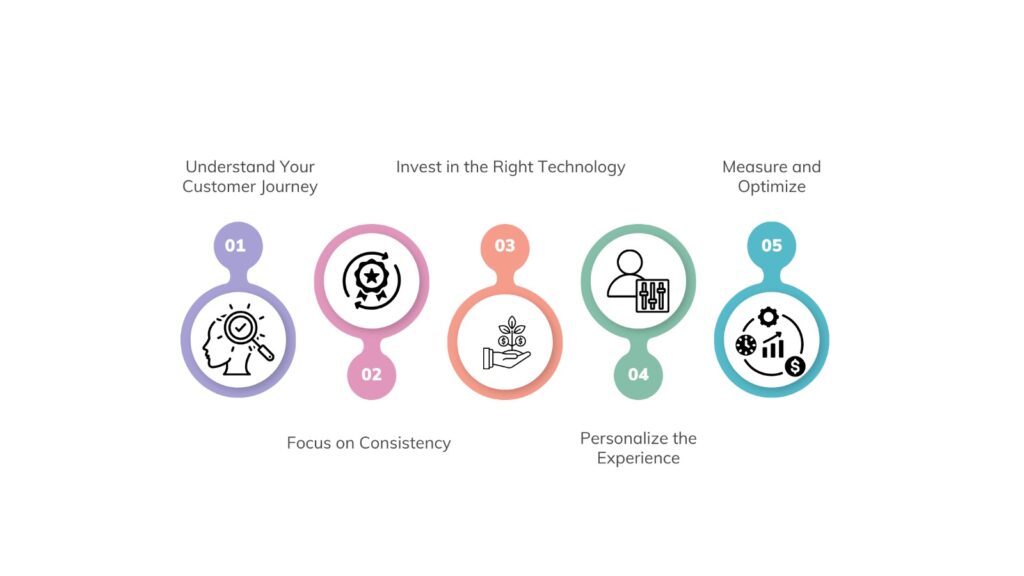It is crucial for companies to know that in the modern digital-technology-oriented economy customer demands have considerably changed. The era of having a single mechanism of customer service or having the concept of marketing modes as a single concept. Today, it is crucial for a business to be present in all stages of that customer’s journey through the interconnected net of channels, platforms, and devices. This is where the Omni-Channel concept comes in into the picture.
Understanding Omni-Channel
Omni-Channel is based on the assumption that a consumer can engage with a brand and a company across different touchpoints – online, in-store, on social media or using applications on his or her smartphone and get a seamless experience.
This approach understands that customers in today’s environment of multiple touch points are not restricted to dealing within one channel. They could begin with discovering a particular product on their mobile device, then navigate to their PC or laptop to read the opinions of other clients, get a physical feel of the product in a store and complete the purchase through an application. Omni-Channel makes sure that regardless of where and how the customer interacts with the brand he is united with the brand.
The Importance of Omni-Channel in Modern Business

- Enhanced Customer Experience: Hence, the use of Omni-Channel approach has several advantages as discussed below; the main one being improved customer experience. The latter has become a decisive factor in modern competitive market for most companies, let alone the giants. In this way, enterprises can unite the various communication instances of the customers and deliver a more pleasant experience. This not only meets customers’ needs but also is helpful to retain customers since it is obvious that customers tend to go back to brands that offer smooth experiences.
- Increased Customer Retention and Loyalty: The timely information delivery across all the channels makes customer repeat business possible. This is why if customers are to move from one platform to another, and they do not face a challenge in doing so, they are likely to stick with the brand. For instance, if a customer has placed some product in the cart on his or her mobile app, but for the purchase, he or she uses the desktop, an Omni-Channel strategy stores the content of the cart, thus easing the shopping process.
- Data Integration for Better Insights: It is also the case that Omni-Channel strategies enable businesses to collect and incorporate information from various sources. When collecting data from different channels, it is possible to get a better understanding of the customers’ needs, wants, and challenges. This data can then be collected to further the marketing campaigns, improve customer relations as well as make strategic decisions that would enhance the business operations.
- Streamlined Operations: Dependence on multiple channels end up complicating matters and makes it difficult to run efficient operations which makes it beneficial to integrate all the channels into one system. For instance, integrating online and Offline selling make inventory management to be easy to undertake. In case a particular item is not available in a physical store, the underlying salesperson can look up for an inventory on the internet or in another store and order to have it delivered so that the client does not walk away with your business.
Challenges in Implementing an Omni-Channel Strategy
there are specific advantages of an Omni-Channel approach; however, there are certain difficulties in its realization. A number of challenges have to be addressed in order to achieve a consistent and seamless experience for the customer.

- Technology Integration: In my opinion technology forms the foundation of any good Omni-Channel strategy. There is the need to adopt multiple systems, for instance, CRM (customer relationship management), ERP, inventory control, and marketing automation to ensure that the company can follow the customer relations across the entire channels. This involves embracing of high level technologies, and the need for specialized skills, which presents some costs which small businesses may find hard to meet.
- Data Management: Since the different channels produce large volumes of data, there is always the challenge how to deal with this data. Businesses must make it possible that they are in a position to gather, store as well as to analyze data. Also, they have to pay attention to the local data protection laws and guarantee the customers’ data confidentiality.
- Consistency Across Channels: Maintaining this is not easy as it sounds because the consistency of the same message across all the channels needs to be achieved. Having many channels means that different channels may require totally different things and be very limited in a way others are not and hence it is very hard to ensure that the same delivery always gives the same experience. For instance, the tone that is used on media platforms will not be similar to the attitude that is being used on a physical store.
- Employee Training: To achieve an Omni-Channel strategy, there has to be a change of culture in an organization. Everyone in the organization needs to be aware and stimulated to act in a manner to ensure that the customer experience is consistent. This is carried out in a view to update the staff on new technological devices on the market, customized consumer relations procedures and manners of communication on various platforms.
Best Practices for Implementing an Omni-Channel Strategy

- Understand Your Customer Journey: One should begin by conceptualize the customer experience across multiple-point and not as a single channel. It is crucial to know more about the customers’ transitions through different channels, their pains, and gaps in the process.
- Invest in the Right Technology: Omni-Channel strategy is made possible by technology. Implement an antecedent that commands a flexible infrastructure through which multiple systems may be connected and deliver a unified customer vision.
- Focus on Consistency: It is very vital that the Omni-Channel strategy be well-championed since it is consistency that determines success of the concept. Make sure that you use the same brand when marketing your products and services and the messages that you use when addressing customers also should be consistent.
- Personalize the Experience: It is advised to analyze the data gathered from the different channels in order to create a customized experience for the customer. This could range from basic where an organization suggests a product that a customer has already bought before to a complicated one where an organization develops a marketing message relevant to a customer’s behavior in a number of ways.
- Measure and Optimize: Assess the efficiency of your Omni-Channel plan on the regular basis and apply changes when necessary. Other important parameters like customer satisfaction rates, general retention and sales revenue figures can also be employed to measure effectiveness.
Frequently Asked Questions (FAQs)
An Omni-Channel strategy involves providing a seamless customer experience across various channels, such as online, in-store, and on mobile devices. It is essential for businesses because it enhances customer satisfaction, increases retention and loyalty, and ensures consistency in brand messaging, ultimately driving business growth.
While both Omni-Channel and multi-channel strategies involve using multiple platforms to engage customers, the key difference is integration. An Omni-Channel approach ensures that all channels are interconnected, offering a seamless and unified customer experience, whereas a multi-channel strategy may treat each channel as separate, potentially leading to inconsistencies.
The primary challenges include technology integration, managing large volumes of data, maintaining consistency across all channels, and training employees to adapt to new systems and processes. Overcoming these challenges requires careful planning, investment in technology, and a focus on continuous improvement.
Businesses can personalize the customer experience by analyzing data collected from various channels to understand individual customer preferences and behaviors. This information can be used to tailor marketing messages, product recommendations, and customer interactions, creating a more relevant and engaging experience.
To implement an Omni-Channel strategy successfully, businesses should focus on understanding the customer journey, investing in the right technology, ensuring consistency across all channels, personalizing the customer experience, and regularly measuring and optimizing their approach based on performance metrics.
Conclusion
Adopting an Omni-Channel strategy is no longer just an option but a necessity for businesses aiming to thrive in today’s interconnected and competitive market. By seamlessly integrating various touchpoints, companies can deliver a unified and personalized customer experience that not only meets but exceeds customer expectations. While the implementation of an Omni-Channel approach comes with its challenges, such as technology integration and data management, the benefits far outweigh the difficulties. Enhanced customer satisfaction, increased loyalty, and streamlined operations are just a few of the rewards that businesses can reap. By following best practices like investing in the right technology, ensuring consistency, and continuously optimizing strategies, companies can position themselves for long-term success in an ever-evolving digital landscape.

